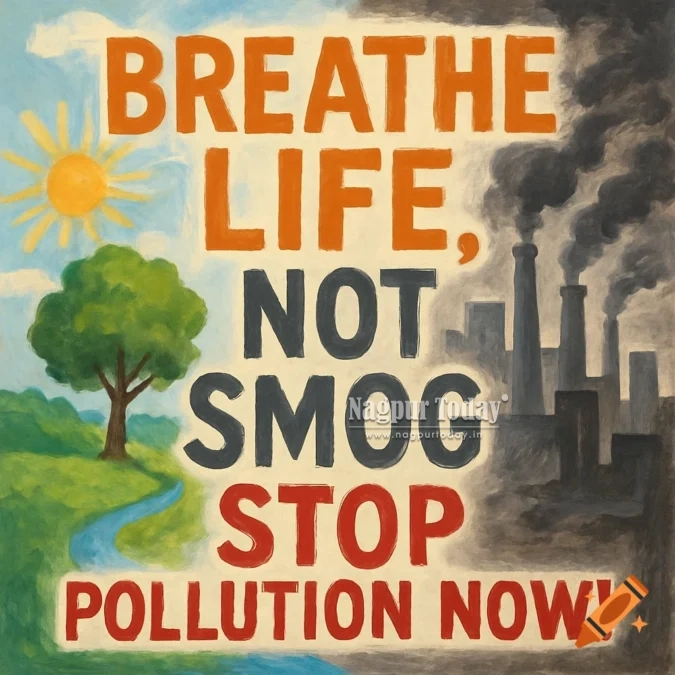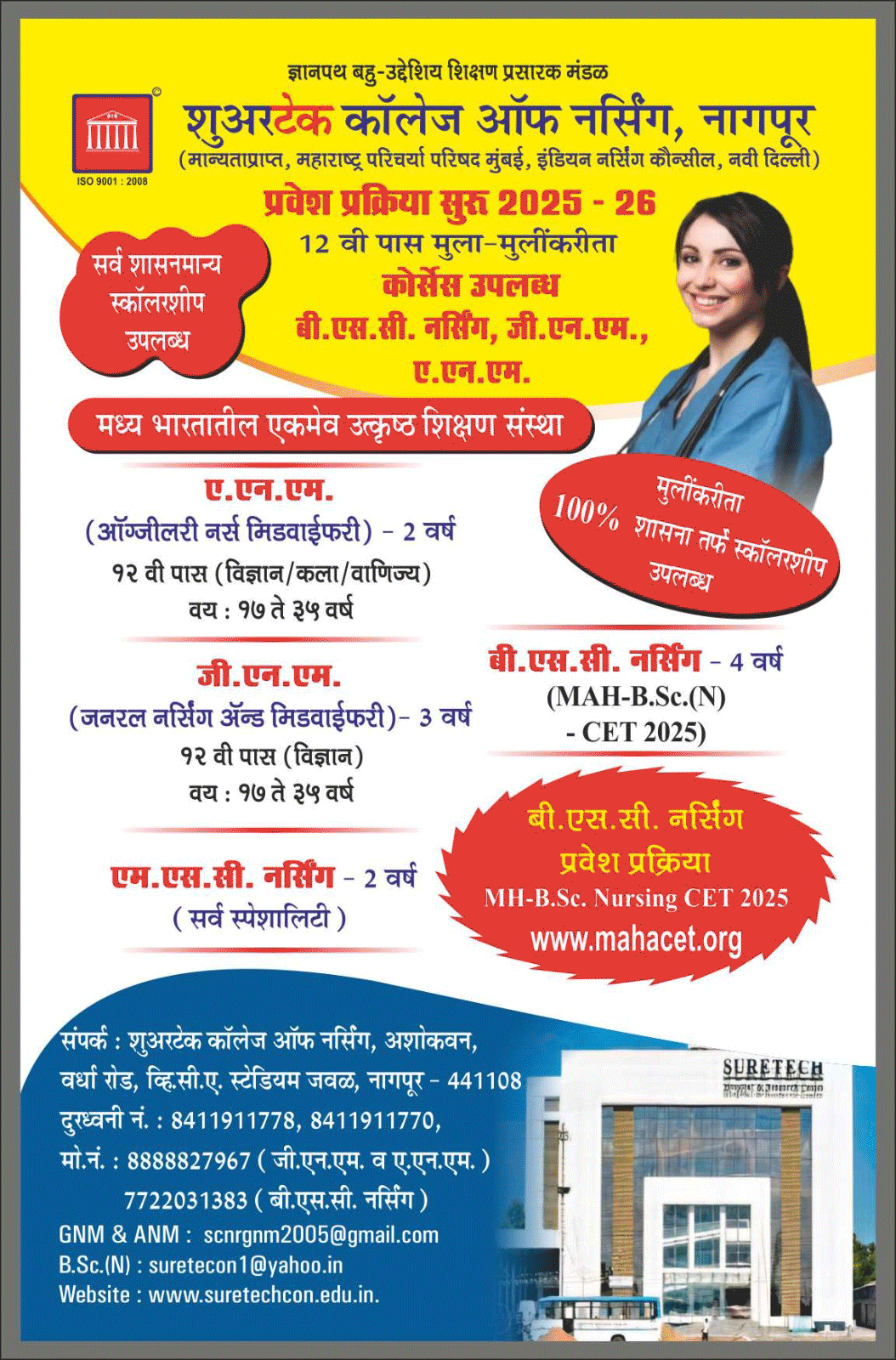Nagpur: As the world marks Environment Day with the theme “Our Land. Our Future. We Are #GenerationRestoration,” a stark reality stares Nagpur in the face — one of shrinking green lungs, rising pollution, and a city grappling with the environmental cost of unchecked development.
Once celebrated for its relatively clean air and tree-lined avenues, Nagpur is now choking under the pressure of its own urban aspirations. The city’s green cover — crucial for maintaining ecological balance — is fast being sacrificed at the altar of rapid, and often senseless, construction. Flyovers, concrete roads, commercial complexes, and gated colonies are mushrooming across the city, many of them displacing trees, water bodies, and open spaces that once kept the city breathable.
Tree canopy thinning at alarming rate
Data from the Forest Department and local environmental groups reveals a steady decline in Nagpur’s tree cover over the past decade. While satellite imagery once placed the city’s green cover at over 17%, recent assessments suggest it has dropped below 11%. This drop is more than a number — it directly impacts the city’s temperature regulation, air quality, and flood management.
“Tree felling has become routine in the name of development, with barely any accountability,” says an environmental science professor. “Compensatory plantations are either delayed or done with little care for survival.”
Vehicular boom, breathing doom
Nagpur’s vehicular population, which stood at around 8.5 lakh in 2011, has now crossed the 20 lakh mark, according to RTO data. This explosive growth has brought with it a steady rise in nitrogen dioxide and particulate matter levels. The city’s air, once considered moderate on the Air Quality Index (AQI), frequently dips into the “poor” category, especially in dense traffic zones like Sitabuldi, Indora Square, and Wardha Road.
Even as the ambitious EV policy and Metro Rail project promise some relief, activists argue the impact has been minimal so far. “Public transport options are improving, but the city still heavily leans on personal vehicles, including two-wheelers and diesel-run autos,” points out a transport analyst.
Water pollution creeps in
The city’s lakes and nullahs, once pristine, are now cesspools of urban waste. Nag River and Pili River — two historically significant water bodies — have turned into dumping channels for untreated sewage and industrial effluents.
Groundwater pollution is another growing concern, particularly in densely populated zones of the city. Tests conducted by civic health labs show rising traces of nitrates and heavy metals, often attributed to construction waste, defunct sewage lines, and improper disposal of chemical waste.
Senseless urbanization: The core villain
Whether it’s building concrete roads without proper stormwater planning or raising malls over wetland patches, Nagpur’s urban planning appears increasingly shortsighted. Experts point to the lack of an environmental impact audit before greenlighting major projects.
“Every high-rise or flyover comes at a cost,” says an architect. “We are concreting areas that were once natural percolation zones. This not only raises the heat index but also weakens the city’s resilience to floods.”
Health hazards on the rise
The consequences of this environmental neglect are now visible in hospital records. There has been a marked increase in respiratory ailments, especially among children and the elderly. Cases of asthma, bronchitis, and even lung cancer have surged in the last five years. Skin infections, allergies, and waterborne diseases peak during monsoons — a direct fallout of pollution and poor waste management.
“The city is sitting on a health time bomb,” warns a pulmonologist. “If we don’t control pollution now, the next generation will pay dearly.”
What’s being Done — and what’s not
While the Nagpur Municipal Corporation (NMC) touts tree plantation drives, lake beautification, and the ‘Green Nagpur’ mission, critics argue that these are often more cosmetic than corrective. “We plant saplings on Environment Day and forget them by Diwali,” remarks a local activist.
Efforts like banning plastic, introducing eco-friendly Ganesh idols, and smart city surveillance on waste dumping have made minor dents, but systemic enforcement remains weak. Civic bodies often cite manpower and fund shortages, while NGOs demand stricter accountability mechanisms.
The way ahead
Nagpur still has a chance to reverse the tide — but only if it acts now. Experts suggest revamping urban planning with sustainability at its core, enforcing green building codes, expanding public transport, penalising polluters, and incentivising eco-conscious practices.
As the world renews its commitment to the environment, Nagpur must look inward and ask: Are we building a future — or burying it under smog and cement?
















